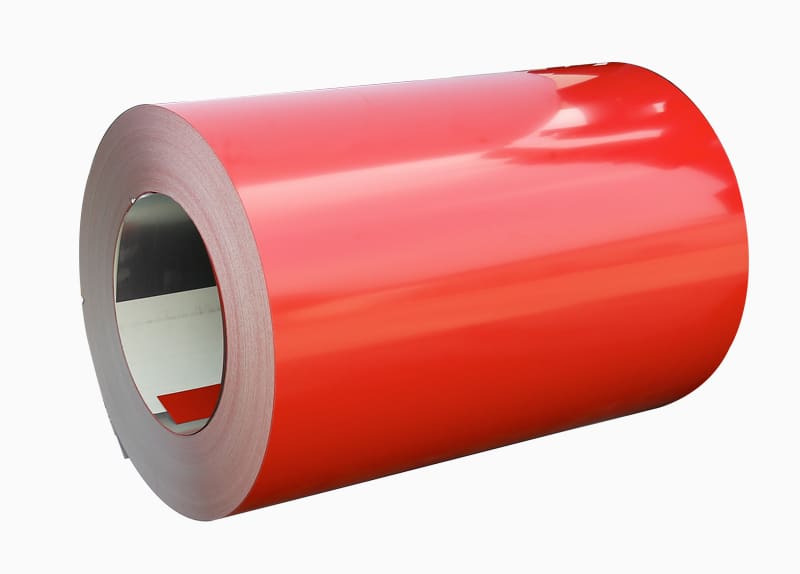Materials to pay attention to when choosing color-coated sheets
Update:23,Nov,2021
Summary: There are many factors to be considered when choosing the material that needs to be paid attention to for color-coated b...
There are many factors to be considered when choosing the material that needs to be paid attention to for color-coated boards, which mainly include the type of coating, the thickness of the coating, the color of the coating and the gloss of the coating. In addition, sometimes the requirements for primer and backside coating of the coating must be considered.
1. Variety of paint
The types of coatings currently used for color coated steel plates include polyester coating (PE), fluorocarbon coating (PVDF), silicon modified coating (SMP), high weather resistance coating (HDP), acrylic coating, Polyurethane coating (PU), plastisol coating (PVC), etc.
For the choice of primer, there are two most important factors. One considers the adhesion of the primer and topcoat as well as the substrate. The second is that the primer provides most of the corrosion resistance of the coating. From this perspective, epoxy resin is the best choice. If you consider flexibility and UV resistance, you can also choose polyurethane primer.
For the back coating, the most correct choice is to choose a two-layer structure, that is, a back primer and a back top coat if the color-coated steel sheet is used in veneer. The primer is of the same variety as the front, and a layer of light-colored (such as white) polyester is selected for the topcoat. If the color-coated steel sheet is used in a composite or sandwich panel, a layer of epoxy resin with excellent adhesion and corrosion resistance is sufficient.
At present, there are still many functional color coated steel plates, such as antibacterial color coating, antistatic color coating, heat insulation color coating, and self-cleaning color coating. These products are developed to meet the special needs of users, but sometimes they cannot take into account other properties of color-coated products. Therefore, users must be clear about their real needs when choosing functional color-coated steel sheets.
Second, the choice of coating gloss
The degree of gloss is not a performance index of the coating, it is just a sign like the color. In fact, paint (coating) is easier to achieve high gloss.
However, the high reflectivity of the high-gloss surface to sunlight during the day will cause light pollution (many glass curtain walls are not used now because of light pollution). In addition, the high-gloss surface has a low coefficient of friction and is easy to slip, which may cause safety hazards during roof construction. ;The aging of color-coated steel plate when used outdoors is the first sign of loss of gloss. If maintenance is required, it is easy to distinguish between the old and new steel plates, resulting in poor appearance; if the back paint is high-gloss, it is easy to produce halo when there are lights in the room. Visual fatigue of personnel. Therefore, under normal circumstances, color-coated steel sheets for construction use medium and low gloss (30-40 degrees).
Three, coating thickness selection
From a microscopic point of view, the coating is a porous organization. Water in the air and corrosive media (chloride ions, etc.) will invade through the weak part of the coating, causing corrosion under the film, and then the coating will bubble and peel off. In addition, even with the same coating thickness, the secondary coating is denser than the primary coating. According to foreign reports and related corrosion test results, the front coating of 20μm or more can effectively prevent the intrusion of corrosive media. Due to the different anti-corrosion mechanisms of primer and topcoat, not only the total film thickness must be specified, but also the primer (" Only in this way can the corrosion resistance of different parts of the color-coated steel sheet be balanced.
PVDF products require a thicker coating film. Because to provide a longer service life guarantee. The requirements for the backside coating depend on the application, and the sandwich panel only requires a layer of bondable primer. The formed steel plate is also required to be coated with two layers due to the corrosive indoor environment. The thickness is at least 10μm or more.
In addition, here I want to explain two misunderstandings in the current domestic market:
One is that a large number of white primers currently exist in China.
The purpose of using white primer is to reduce the thickness of the topcoat, because the normal corrosion-resistant primer for construction is yellow-green (hence the strontium chromate pigment), and there must be enough topcoat thickness to have good hiding power. In this way, the corrosion resistance is very dangerous. First, the primer has poor corrosion resistance, and the top coat is greatly thinned to less than 10 microns. This kind of color-coated steel sheet looks glamorous, and corrosion will occur in different places in less than two years (cuts, bends, under the film, etc.).
The second is the color-coated steel plate for construction projects. The same project uses color-coated steel plates from different manufacturers and different batches. The colors seem to be the same during construction, but after several years of sunlight, the color change trend of different coatings and different manufacturers Different, resulting in serious chromatic aberration.
There are too many such examples. Even for products from the same supplier, it is strongly recommended to place an order for the same project, because different batch numbers may use products from different coating suppliers, which increases the possibility of color difference.





